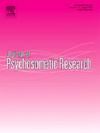Association of multisensory dysfunctions-smell, taste, hearing and vision with depression in the U.S. adults
IF 3.3
2区 医学
Q2 PSYCHIATRY
引用次数: 0
Abstract
Objective
Sensory dysfunction is a disorder in which the brain has problems processing information from the senses. Sensory dysfunctions not only affect physical health and quality of life, but also have a negative impact on mental health. This study aimed to investigate the association between multisensory dysfunctions (smell, taste, hearing and vision) and depression.
Methods
The cross-sectional analysis included 3328 participants from the National Health and Nutrition Examination Survey (NHANES) 2013–2014. The 8-item Patient Health Questionnaire (PHQ-8) was used to evaluate depression status. Sensory impairments were assessed using self-reported questionnaires. Logistic regression adjusted for related demographics and socioeconomic data was used to assess the relationship between concurrent sensory dysfunctions and depression.
Results
Participants with self-reported smell, taste, vision, or hearing dysfunction were more likely to experience depression, with vision dysfunction having the greatest risk of depression both in the separate model (AOR = 3.245, 95 % CI: 2.282–4.614, P < 0.001) and mutually adjusted model (AOR = 2.613, 95 % CI: 1.818–3.758, P < 0.001). Moreover, concurrent multisensory dysfunctions increase the risk of depressive symptoms compared to a single sensory disorder. Participants with three to four sensory dysfunctions had more than a 7-fold risk of depression (AOR = 7.721, 95 % CI: 4.693–12.692, P < 0.001) after adjusting for age, gender, race, chronic diseases, and health-related behaviors.
Conclusion
The findings suggest that smell, taste, vision, or hearing dysfunction is associated with the increased prevalence of depression, and concurrent multisensory dysfunctions bring a higher risk to depression than a single sensory impairment.
多感觉功能障碍——嗅觉、味觉、听觉和视觉与美国成年人抑郁症的关联
感觉功能障碍是大脑在处理来自感官的信息方面出现问题的一种疾病。感觉功能障碍不仅影响身体健康和生活质量,而且对心理健康也有负面影响。本研究旨在探讨多感觉功能障碍(嗅觉、味觉、听觉和视觉)与抑郁症之间的关系。方法采用横断面分析纳入2013-2014年全国健康与营养检查调查(NHANES) 3328名参与者。采用8项患者健康问卷(PHQ-8)评估抑郁状况。使用自我报告的问卷来评估感觉障碍。采用相关人口统计学和社会经济数据调整后的Logistic回归来评估并发感觉功能障碍与抑郁症之间的关系。结果自我报告嗅觉、味觉、视觉或听力功能障碍的参与者更容易经历抑郁,在单独的模型中,视觉功能障碍的抑郁风险最大(AOR = 3.245, 95% CI: 2.282-4.614, P <;0.001)和相互调整模型(AOR = 2.613, 95% CI: 1.818-3.758, P <;0.001)。此外,与单一感觉障碍相比,并发的多感觉功能障碍增加了抑郁症状的风险。有3 - 4种感觉功能障碍的参与者有超过7倍的抑郁风险(AOR = 7.721, 95% CI: 4.693-12.692, P <;0.001),校正了年龄、性别、种族、慢性病和与健康相关的行为。结论嗅觉、味觉、视觉或听力障碍与抑郁症患病率增加有关,并发的多重感觉功能障碍比单一感觉功能障碍更容易导致抑郁症。
本文章由计算机程序翻译,如有差异,请以英文原文为准。
求助全文
约1分钟内获得全文
求助全文
来源期刊
CiteScore
7.40
自引率
6.40%
发文量
314
审稿时长
6.2 weeks
期刊介绍:
The Journal of Psychosomatic Research is a multidisciplinary research journal covering all aspects of the relationships between psychology and medicine. The scope is broad and ranges from basic human biological and psychological research to evaluations of treatment and services. Papers will normally be concerned with illness or patients rather than studies of healthy populations. Studies concerning special populations, such as the elderly and children and adolescents, are welcome. In addition to peer-reviewed original papers, the journal publishes editorials, reviews, and other papers related to the journal''s aims.

 求助内容:
求助内容: 应助结果提醒方式:
应助结果提醒方式:


